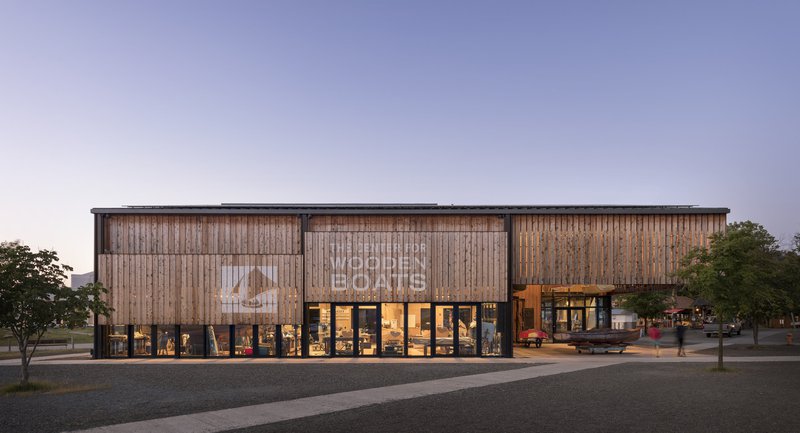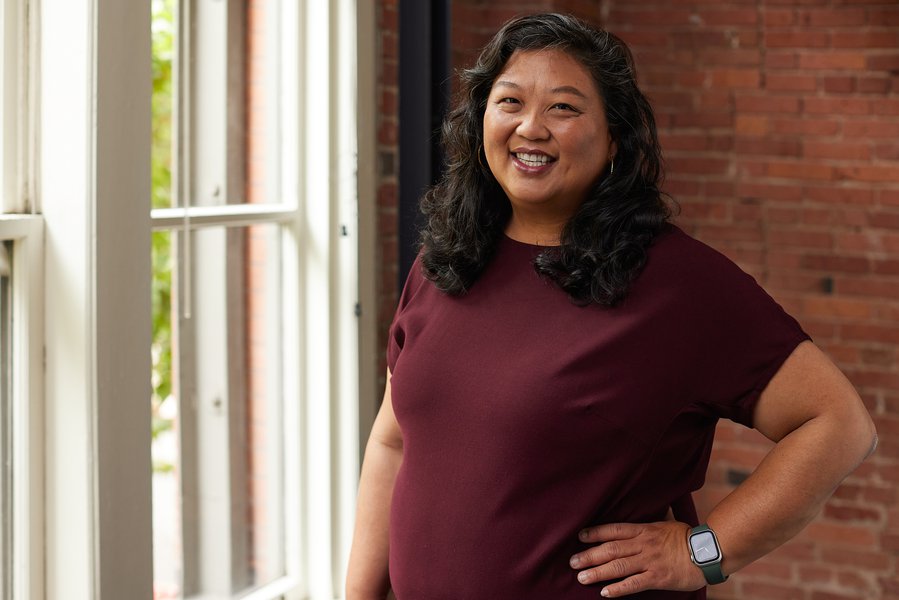“My job is to bridge the gap between creatives and business leaders, ensuring that our people and our culture are supported in ways that enable them to create beautiful work,” says Marlene Chen, Principal/Owner and COO at Olson Kundig.
Marlene trained as an architect at Wellesley College and the University of Washington before joining Olson Kundig’s Seattle office in 2005 - first as an architect, then an associate, and eventually, a principal and owner. “The firm does about a half-and-half split of residential and non-residential projects, and I’ve done a bit of both. In particular, I worked on cultural projects such as the Bob Dylan Centre in Tulsa, the Bay Area Discovery Museum in San Francisco, and the Tillamook Creamery Visitor Centre in Oregon.”
Three years ago, Marlene shifted her focus to the firm’s operations, a space where she now leads the team she describes as the “connective tissue” that holds the practice together. “We were on a huge growth trajectory after COVID; our team expanded from about 150 people to about 350, and we opened new offices in Chicago and New York. I found myself asking how we could get all these people moving in the same direction, united in their processes and projects. Stepping into the COO role has enabled me to support that evolution while allowing the practitioners to maintain the design excellence that Olson Kundig is known for.”

ANOHA – The Circular Wooden Ark
Hufton & Crow

Hale Lana
Nic Lehoux
For 50 years Olson Kundig has worked to “expand the context of built and natural landscapes” through projects that take the best aspects of residential design and enhance their performance for use in commercial spaces. “There’s a sense of warmth in our work; people like the way it feels. That comes from a great understanding of proportion and scale. Our residential work is a huge part of our practice, and at that scale we can work with really innovative clients and fabricators to develop ideas that we then translate into the commercial sphere. By working across both, we have built a more balanced firm that is equipped to withstand market and economic uncertainty.
“One of the specific design concepts that we’re known for at all scales is kinetics - design that adapts and responds to human engagement. You might have a skylight that opens or a window wall that pivots; it’s architecture that moves and transforms space. We’ve embodied kinetic design into the practice by exploring those ideas on a residential scale and then adapting them to be implemented safely in commercial environments.”
As COO, Marlene acts as a conduit between the firm’s practitioners and its business office, fostering successful communication and collaboration. “My experience as a practitioner certainly shapes my perspective, and I have a few projects that I still shepherd, but my priority now is in our operations and supporting our people to succeed.” A big part of that success, she says, is in guiding the organisation through a changing industry and world. “There’s a pace and a cadence to change which we view more as evolution than revolution. It’s all about taking micro steps each day and then looking back and seeing how far you’ve come. A big part of my job now is communicating that change to our team and helping them understand the direction the business is taking. I love figuring out how to get buy-in and creating transparency. I get excited by making the delivery processes easier and reducing friction so that our creative team has more time to design.”

Center for Wooden Boats
Aaron Leitz

The Century Project
Hufton & Crow
As she puts it, the operations team has the benefit of “looking at the whole pie, not just one slice.” This enables them to foster interpersonal connection between departments and create humanising moments. “We have traditions like ‘Home Room’, where different teams are able to cross-pollinate in an unstructured way every month, and Pecha Kucha sessions every quarter, where staff in all our offices are invited to do a six-minute presentation about something in their personal life. Those things are about fostering collaboration and building connections, not solving design problems. We also have an internal university where we explore specific topics that can help our people do their jobs better. Recently, we did one about designing in fire country and talked about how and why we had several California homes perform really well in the recent wildfires.”
Marlene’s team is also working to create more tailored mentorship opportunities for people looking for fellowship and deeper connection. “We have six affinity groups that were self-selected by our team members, which provide opportunities for Asian & Asian American, Black/African American, Latin American (Latinx), Caregivers, LGBTQIA+, and individuals who identify or are affiliated with disability and neurodiversity, to connect around their shared experiences in the workplace and in the industry. These are really tricky spaces to navigate in the US right now, but we’re benchmarking ourselves against tools like the JUST Label so that we know how we’re tracking. This helps us to identify workstreams we can improve, such as hiring and leadership training. We also work hard to critique our own physical spaces and ensure that they are equitable and accessible for everyone in our team.”

Bilgola Beach House
Nic Lehoux

Fourth Ward Office Project
Nic Lehoux
In the virtual space, Marlene’s team is instrumental in implementing new technologies and managing their inherent risks. “Big things are being built differently now, and technological tools change how we relate to builders and contractors. AI is clearly one tool that’s taken over many industries, but we feel comfortable with it as a presence in our practice. It might enable you to get a head start on an idea, rather than beginning with a blank piece of paper. You just have to use it as a tool that supplements and enhances rather than replacing.”
For the second half of 2025, the focus is on people, Marlene says, with opportunities to improve employee engagement and gain valuable perspective. “During that big growth phase a few years ago, we were so busy that we didn’t necessarily document all our processes, so we’re revisiting some of that now to see how we can better support our team. We’re also exploring ways to expand our engagement with our offices in Chicago and New York. Externally, we’re learning from other firms how they do things and how we’re tracking against others in the industry.
“I feel very lucky to work with people who care so deeply about design and who bring a willingness to let me connect the dots and make the business better. Yes, Olson Kundig has a very high bar for design, but we also want to bring a human-centred nature to how we practice. It’s not an easy industry, but I feel like I’m in it with the right projects and the right people.”
To learn more and connect with Marlene, visit https://olsonkundig.com/, find her on LinkedIn, and follow Olson Kundig on Instagram.

Shinsegae International
Kevin Scott / Olson Kundig

Outpost
Tim Bies / Olson Kundig









